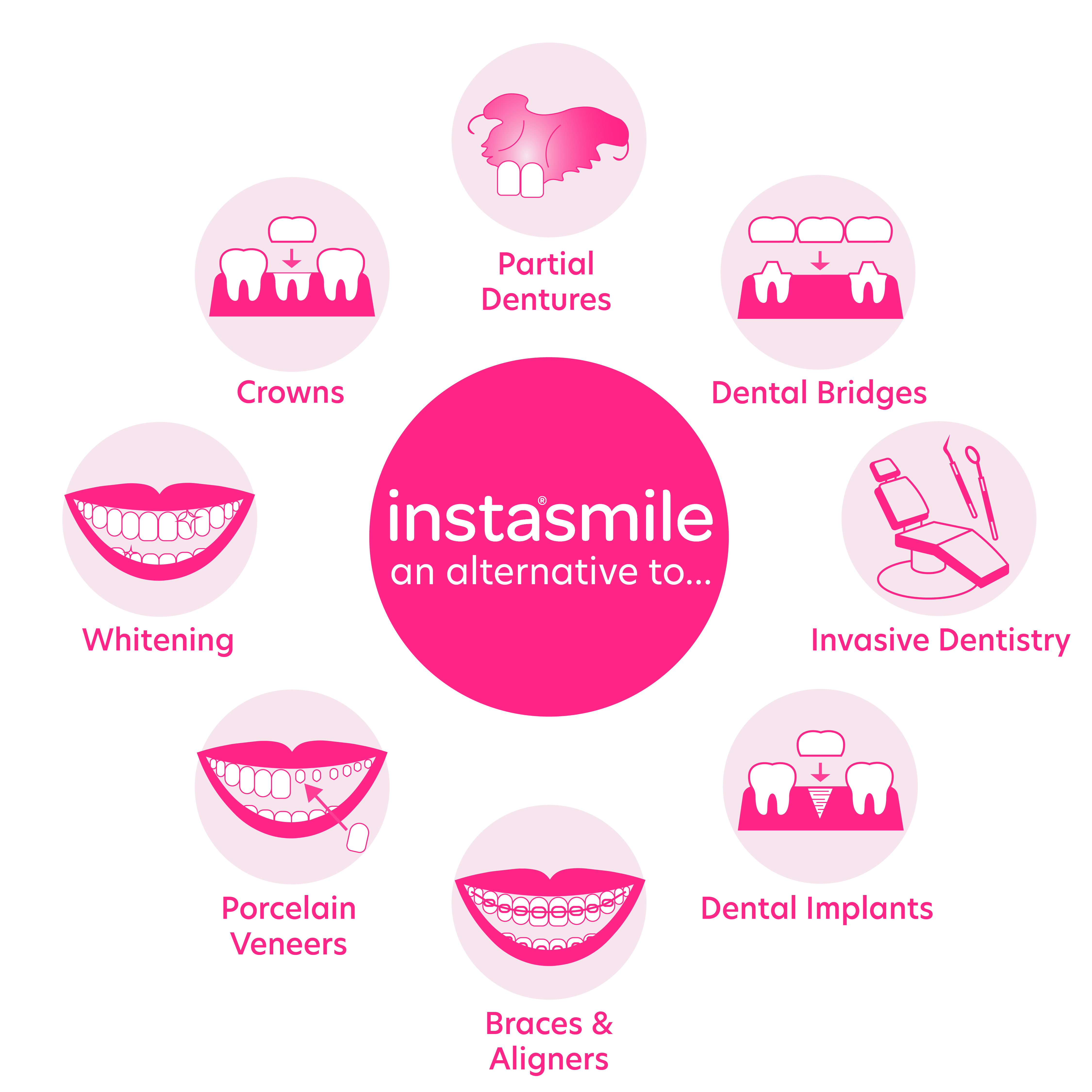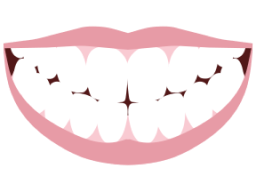Teeth Bonding Alternatives
Seeing edited pictures online, and celebrities on the red carpet with perfect smiles, has made us all feel like we need cosmetic dentistry to give us an A-lister smile. Those with chips, gaps, and discolouration can, therefore, have lower self-confidence, leading to them avoiding smiling altogether! One popular treatment to correct these common concerns is dental bonding. It’s relatively non-invasive and gives patients the boost they need to take on each day with confidence. But is it all it’s cracked up to be? The instasmile team reveals all.

What is Teeth Bonding?
Dental bonding is a procedure where the dentist applies composite to each tooth to cover cracks, chips, discolouration, and other dental insecurities. It can be applied to just one tooth or multiple teeth and is shaped to create a natural enhancement. Tooth bonding is favoured by patients as it doesn’t require anaesthesia or multiple trips to the dentist, meaning it’s a nice and easy procedure compared to the likes of dental veneers.
The Dental Bonding Procedure
To begin with, your dentist will ensure they have chosen the best shade for the teeth by comparing various resin shades and ensuring it matches the colour of your teeth closely. In some cases, whitening will be performed first if you require a brighter white finish. Your dentist will roughen the surface of the tooth, then apply a bonding agent that allows the material to stick to the tooth. The composite resin is applied over the liquid, the tooth is moulded and shaped, and then it is all hardened with ultraviolet light. Your dentist can continue to shape the tooth after the resin has hardened if needed. Dental bonding tends to give an extremely natural finish, unlike veneers, where the result can sometimes be too uniform and blocky.
Bear in mind that if Invisalign braces and whitening are required, multiple trips to the dentist over a period of months will be needed to ensure the teeth align properly before the treatment can take place. It all depends on the patient's personal treatment plan and the results required.

When is Dental Bonding Needed?
Dental bonding is a good choice for those who have imperfections and defects in their teeth that they would like to cover up and fix without extensive, complicated surgery requiring anaesthetic. For instance, some people with cracked and discoloured teeth opt for dental bonding to give a more uniform, perfect appearance. It can also be used to close small gaps between teeth. This treatment is suited for those who want to tweak and enhance their natural teeth, not for those requiring a complete smile makeover or with missing teeth to replace.
Tooth bonding can increase the size of a tooth too. If you choose to proceed, you’ll need to follow the aftercare instructions carefully to maintain your smile:
- #1: Brush with a clean toothbrush, use mouthwash, and floss twice daily.
- #2: Avoid hard foods and sweets.
- #3: Stop biting your nails.
- #4: Avoid tea, coffee, and tobacco for two days after the procedure to prevent stains, and limit them afterwards.
- #5: Schedule regular dental cleanings (once every 6 months).
What Are the Disadvantages of Dental Bonding?
While tooth bonding is fast and requires no downtime, there are disadvantages:
- Eating certain foods may need to be limited to prevent cracks and breakages.
- Tooth bonding is not stain-resistant.
- Depending on lifestyle and oral hygiene, bonding lasts 5–10 years before needing replacement.
- It’s not suited to those who grind their teeth or clench their jaw.

Can You Get a Teeth Bonding Kit at Home?
Wouldn’t it be great to achieve the look of tooth bonding without dental visits? Instasmile’s snap-on veneers do just that! They’re quick, pain-free, and effective. With our at-home impression kits, you can create your dream smile without leaving your house. Snap-on veneers can be worn all day or just when you need a confidence boost, like on a first date, wedding day, or graduation.
The benefits of instasmile snap-on veneers include:
- A removable solution you can take in and out as needed.
- Pick your shade for a smile that suits you.
- Choose veneers for the top teeth, bottom teeth, or both.
- Cover missing teeth, broken teeth, and chipped teeth.
- No dentist appointments; just make your impression at home.
- No surgical procedures or anaesthetic required.
Snap-on veneers are a more cost-effective option compared to most dental treatments. Spread the cost if needed and enjoy the fastest, most affordable way to improve your smile and boost confidence.

Composite Bonding vs Instasmile
So…what’s the verdict? Bonding or clip on veneers? If you don’t mind the cost, dental visits, and maintenance, composite bonding is a great way to enhance your natural smile. However, if you’re insecure about your whole smile and want a fuss-free, affordable way to conceal imperfections, clip on veneers will be your new best friend.
Over 300,000 happy customers have already found their perfect smile. Are you ready for your affordable smile transformation with no surgery and no dentist visits? Click below to get started and see if you’re suitable!
Results Of Instasmile Clip On Veneers
Every smile is unique, but seeing one of our customers wearing their instasmile can help you get a feel for how your new perfect smile will look.
Are you ready for your affordable smile transformation with no surgery and no dentist visits?
Click below to get started and see if you're suitable!
GET STARTED









 UK
UK
 USA
USA
 Australia
Australia
